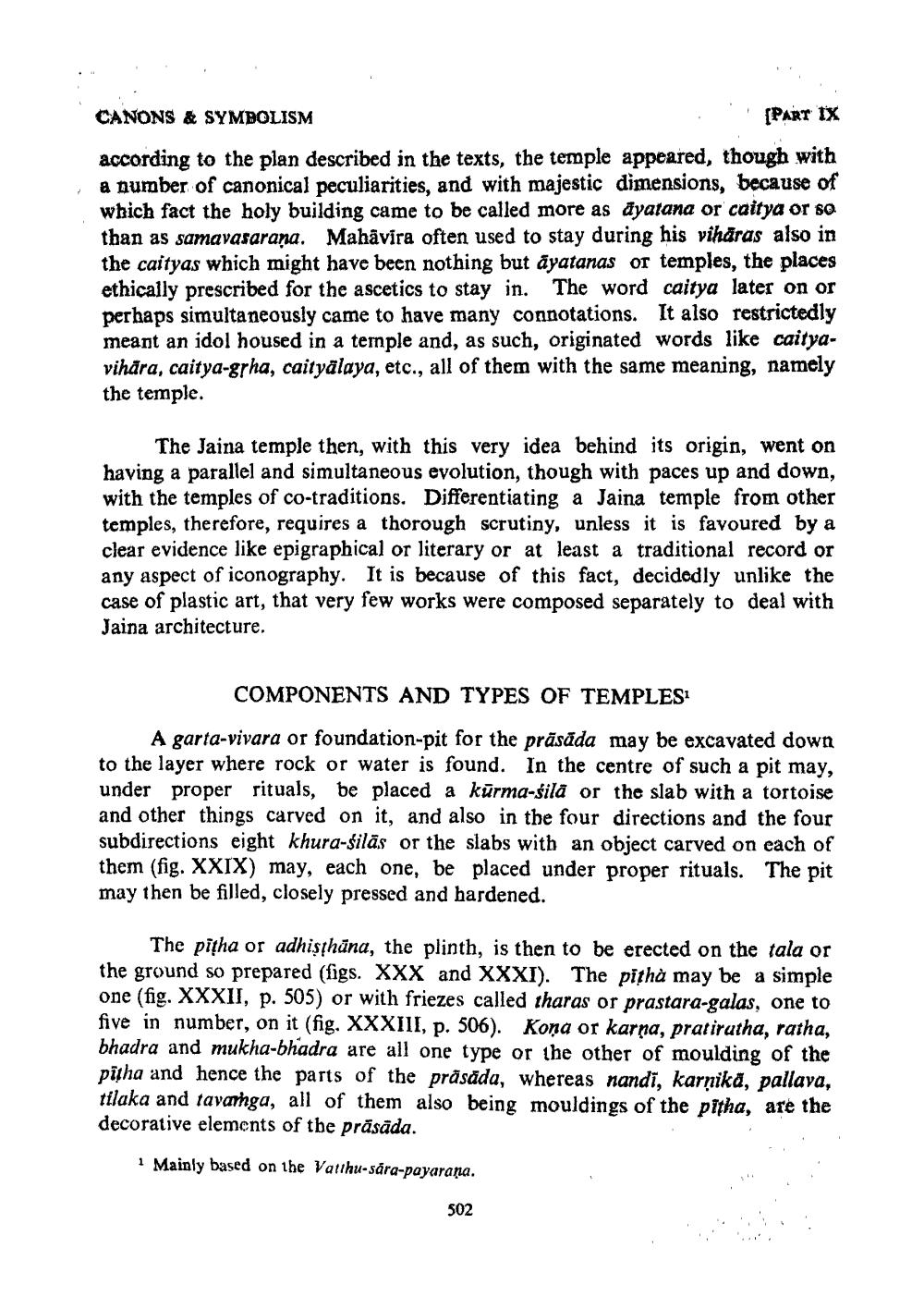________________
CANONS & SYMBOLISM
(PART IX
according to the plan described in the texts, the temple appeared, though with ; a number of canonical peculiarities, and with majestic dimensions, because of
which fact the holy building came to be called more as dyatana or caitya or so than as samavasarana. Mahavira often used to stay during his vihāras also in the caityas which might have been nothing but ayatanas or temples, the places ethically prescribed for the ascetics to stay in. The word caitya later on or perhaps simultaneously came to have many connotations. It also restrictedly meant an idol housed in a ternple and, as such, originated words like caityavihära, caitya-grha, caityalaya, etc., all of them with the same meaning, namely the temple.
The Jaina temple then, with this very idea behind its origin, went on having a parallel and simultaneous evolution, though with paces up and down, with the temples of co-traditions. Differentiating a Jaina temple from other temples, therefore, requires a thorough scrutiny, unless it is favoured by a clear evidence like epigraphical or literary or at least a traditional record or any aspect of iconography. It is because of this fact, decidedly unlike the case of plastic art, that very few works were composed separately to deal with Jaina architecture.
COMPONENTS AND TYPES OF TEMPLES:
A garta-vivara or foundation-pit for the prāsāda may be excavated down to the layer where rock or water is found. In the centre of such a pit may, under proper rituals, be placed a kūrma-sila or the slab with a tortoise and other things carved on it, and also in the four directions and the four subdirections eight khura-siläs or the slabs with an object carved on each of them (fig. XXIX) may, each one, be placed under proper rituals. The pit may then be filled, closely pressed and hardened.
The pitha or adhişthūna, the plinth, is then to be erected on the tala or the ground so prepared (figs. XXX and XXXI). The pithà may be a simple one (fig. XXXII, p. 505) or with friezes called tharas or prastara-galas, one to five in number, on it (fig. XXXIII, p. 506). Koņa or karna, pratirutha, ratha, bhadra and mukha-bhadra are all one type or the other of moulding of the püha and hence the parts of the präsāda, whereas nandi, karņika, pallava, tilaka and tavanga, all of them also being mouldings of the pitha, are the decorative elements of the präsāda.
1 Mainly based on the Vatihu-sara-payarana.
502




